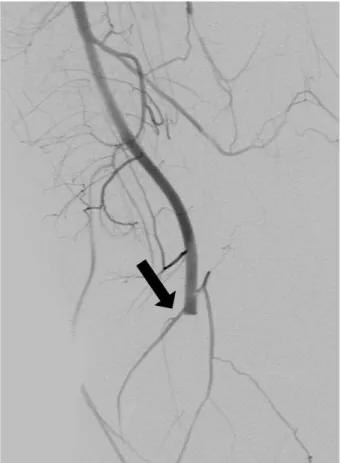486
Print ISSN 1738-5520 / On-line ISSN 1738-5555 Copyright © 2011 The Korean Society of Cardiology CASE REPORT
http://dx.doi.org/10.4070/kcj.2011.41.8.486
Open Access
A Case of Distal Embolization of Left Ventricular Thrombus due to Blunt Chest Trauma-Induced Coronary Artery Occlusion
Ji-Hwan Kim, MD and Tae Soo Kang, MD
Department of Internal Medicine, Dankook University College of Medicine, Cheonan, Korea ABSTRACT
Chest trauma can lead to various cardiac complications ranging from simple arrhythmias to myocardial rupture. A variety of injuries to the coronary arteries, including laceration, thrombosis, intimal dissection, arteriovenous fistula and pseudoan- eurysm formation following blunt trauma have been rarely reported. We report a very unusual case of distal embolization of left ventricular thrombus due to blunt chest trauma-induced coronary artery occlusion. (Korean Circ J 2011;41:486-489) KEY WORDS: Coronary occlusion; Trauma; Embolism; Myocardial infarction; Heart aneurysm.
Received: March 14, 2011 Revision Received: April 22, 2011 Accepted: May 11, 2011
Correspondence: Tae Soo Kang, MD, Department of Internal Medicine, Dankook University College of Medicine, 16-5 Anseo-dong, Cheonan 330-715, Korea
Tel: 82-41-550-7690, Fax: 82-41-556-0524 E-mail: neosoo70@dankook.ac.kr
• The authors have no financial conflicts of interest.
cc

